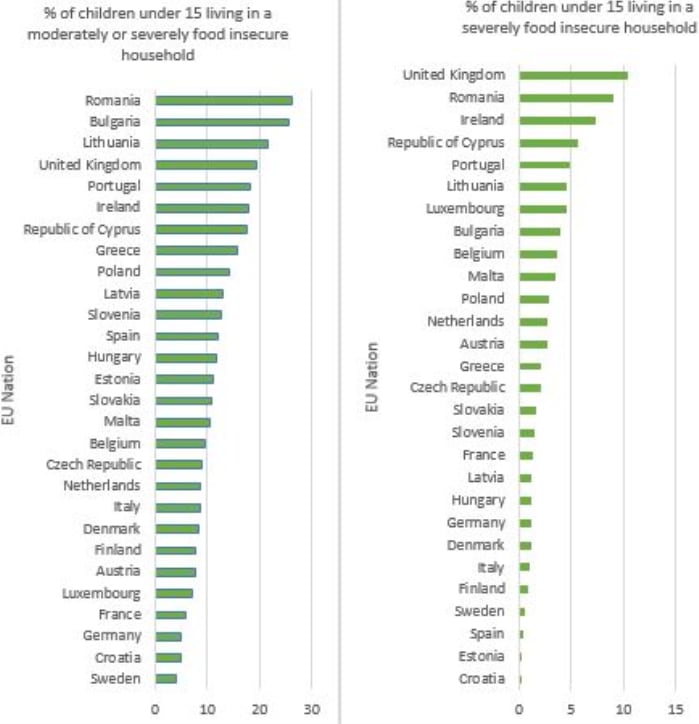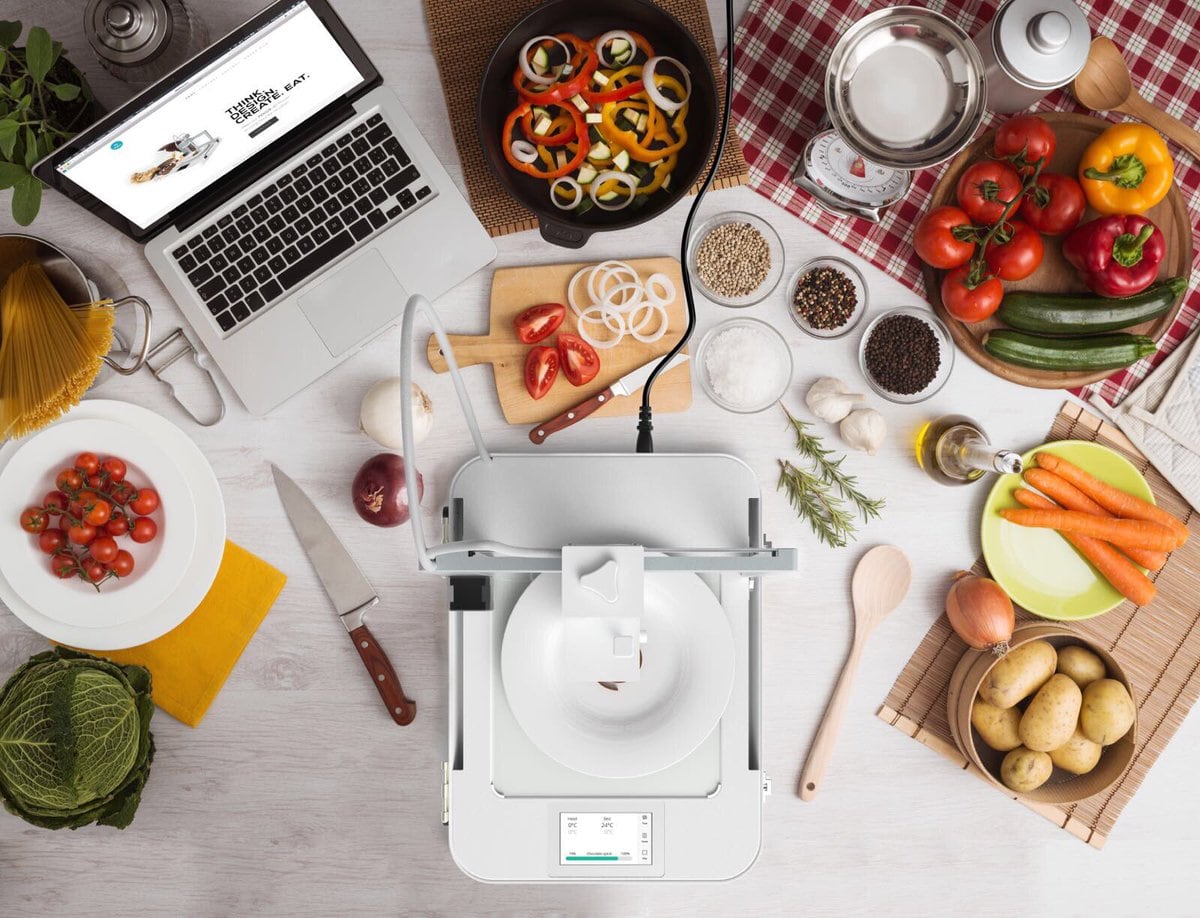“Food will define the future more than any other sector. What we eat, how we produce it and how it gets to us has the greatest impact on the environment and public health,” Blakemore told an audience of around 700 industry leaders and academics at the Guildhall, London, this week (26 February).
The CEO of Compass, a hospitality group that delivers 5.5 billion meals a year in 50 different countries, outlined what he believes are the biggest challenges facing the food sector: increasing food inequality, obesity and future population growth.

Food poverty is a challenge that requires urgent action, Blakemore urged. “Perhaps even more worrying is rising inequality in today’s society,” the chief executive warned. “
Action for Children estimated one million children faced ‘Dickensian’ levels of poverty this Christmas, waking up cold and hungry. For other children poor diets have led to one in three 10 and 11-year-olds being obese.”
Indeed, according to a 2017 report from UNICEF, the UK is one of the most food insecure nations for children in the European Union, with the highest level of 'severe' food insecurity.
The obesity time-bomb created by growing prevalence of obesity and related NCDs across all age groups is putting pressure on stretched health infrastructures in Europe. As Cancer Research UK recently revealed, obesity is a major cause of cancer, second only to smoking. “Today’s obesity rates have created a national health crisis,” Blakemore warned.
Delivering the keynote speech at the 2019 City Food Lecture, Blakemore also took the opportunity to outline the longer-term global trials that the food system faces. “Global food demand, even today, has overstretched the system and is destroying world resources.”
This problem will only intensify. The global population is forecast to grow by around 25% to more than nine billion people by 2050. Blakemore noted that “rather scarily” global demand for protein will increase by around 80% from today’s levels.
Changing consumer landscape
At the same time as grappling with these ‘big picture’ problems, food makers must also respond to shifting consumer requirements.
Millennials and generation Z are now outnumbering baby boomers and by next year more than 50% of the workforce will be millennial or younger. This is ushering in a new era in food.
“These cohorts of our population are driving the social change in our industry. Food has become so much more than food for survival. It is a form of identity, part of our social fabric and a hook for social media.”
Blakemore identified six trends he believes are gaining steam in this context, with health and wellness representing an overarching theme.
#1: Immediacy
“As we think about the current trends and how they will evolve with the next generation, I’m pretty sure the drive for immediacy will become even greater. What the consumer wants, when they want it and how they want it.”
#2: Experiential
“We all know experiences are being prioritised at the expense of material items… It’s no longer fun keeping up with the Jones. Experiences are more memorable and define us as people. The same experiential trend is also true in food. Long gone are the days of set meals repeating weekly. It’s all about food creating a sense of wonder and defining that consumption moment.”
#3: Localisation and authenticity
“To have healthy cities for the next decade we need to embrace locally produced food on a far more extensive scale than we see today… Today’s consumer wants to feel part of the story. They want to know the origin of food, where it was grown, the methods and environmental impact of how it was produced, by whom and how it arrived at the table… The explosion of locally produced will only increase.”
#4: Clean label
“Nine out of ten consumers rate ingredient transparency as important or very important… This is interlinked with simple, less complicated food where the ingredients are the heroes of the meal rather than being pre-prepared or requiring honed cooking skills.”
#5: Transparency
“There is an ever-increasing consumer demand for transparency into the provenance of food. This is linked to the explosion of health and wellness in today’s society – but there is still a long way to go.
“Clean eating, freshness and localism is an expression of a growing desire for transparency in the food industry and an expression of trust.”
#6: Meat-free
“I would argue its partly the attitudes [reflected in these trends] which have resulted in the rise of vegetarianism, vegan and meat-free Mondays."
Speaking on the side lines of the event, Blackmore added that he believes the rise of plant-based options is much deeper than a “fad”, suggesting that the trend has sticking power.
‘Science and technology will play a greater role’
The food industry of the future, then, will be shaped by emerging consumer demands as well as the need to deliver healthy food in a sustainable manner.
Blakemore believes that “such pressures also bring opportunities”, suggesting that transformational innovation will help create a healthier world population and an industry that is more “sustainable and economically robust”.
Important developments are taking place in the field of robotics – which are “starting to gain a level of sophistication which could radically change how we operate” – urban farming and augmented reality – “arguably the next big technological advancement for society and food”.
Artificial intelligence “maybe even further into the future”, Blakemore said, ”but it is possible we will have a digital self who knows more about us than we do.” This ‘digital self’ can be used to inform food related decisions based on multiple in-puts, from preference to health data.
Data will also become increasingly important in this paradigm for food makers, opening the door to collaboration and partnerships that Blakemore predicted will be essential to thrive in this new order.
“3D printing will also infiltrate the food industry in a more pervasive way,” he predicted. “Perhaps we’ll use food robots to download recipes and 3-D print our meals from cartridges of ingredients. Delivery solutions will also be revolutionised beyond recognition."
Investment in innovation
The food tech drive is largely being spear-headed by the efforts of innovative start-up companies. Blakemore noted that venture capital is “flooding” into these start-ups, with US$2.2 billion invested last year.
“Disruptors, with their problem-based approach to setting up business will inevitably come up with solutions to these challenges and overhaul the landscape of the food industry as we know it. Innovation is imperative for us all.”
However, when pressed by FoodNavigator, Blakemore conceded that large food corporates are not as laser-focused on investment in transformative tech, which is viewed as “niche” within many business models.
“Change is happening but perhaps not at the pace [we would like]… and perhaps not in the core. How quickly these things will scale, who knows?”




